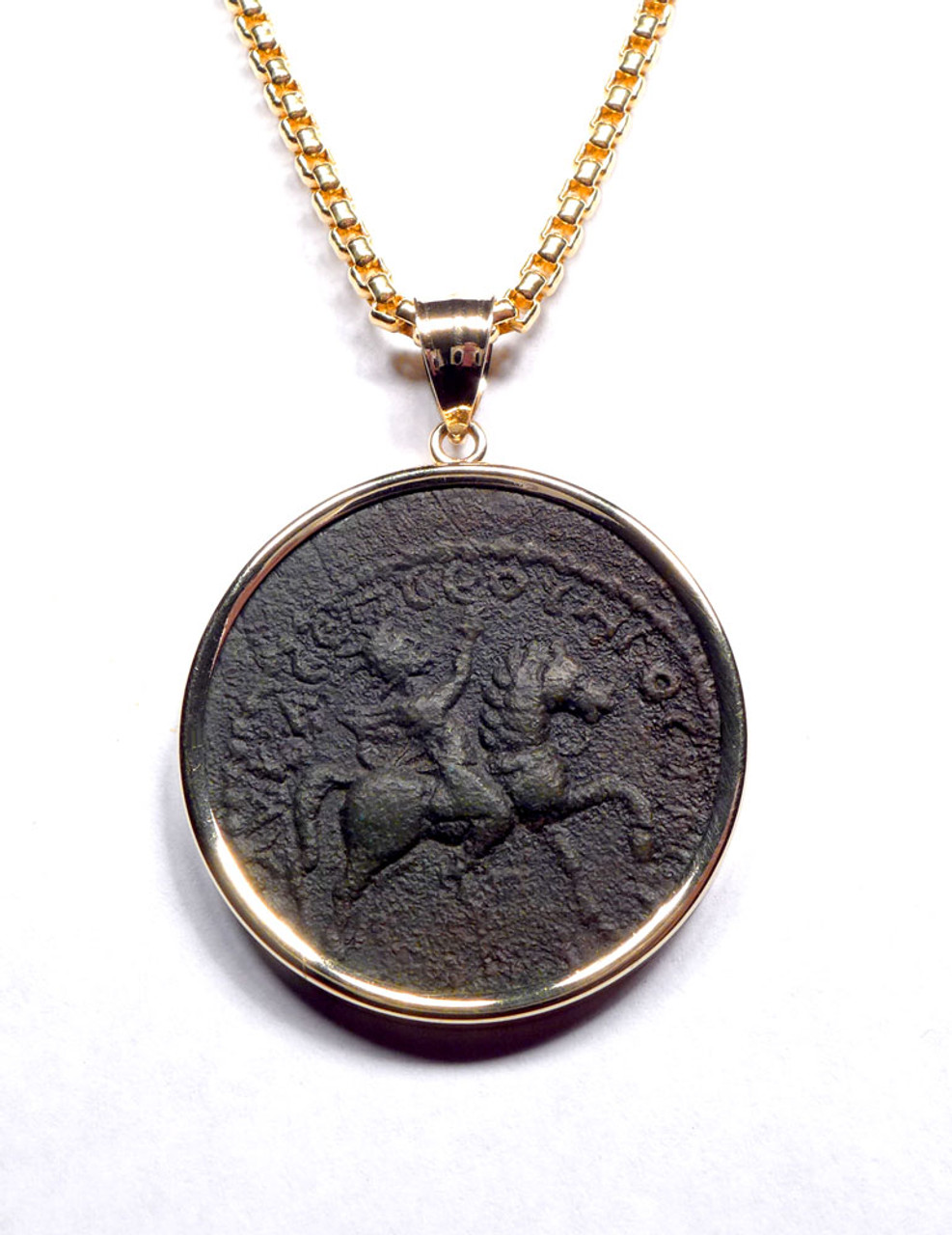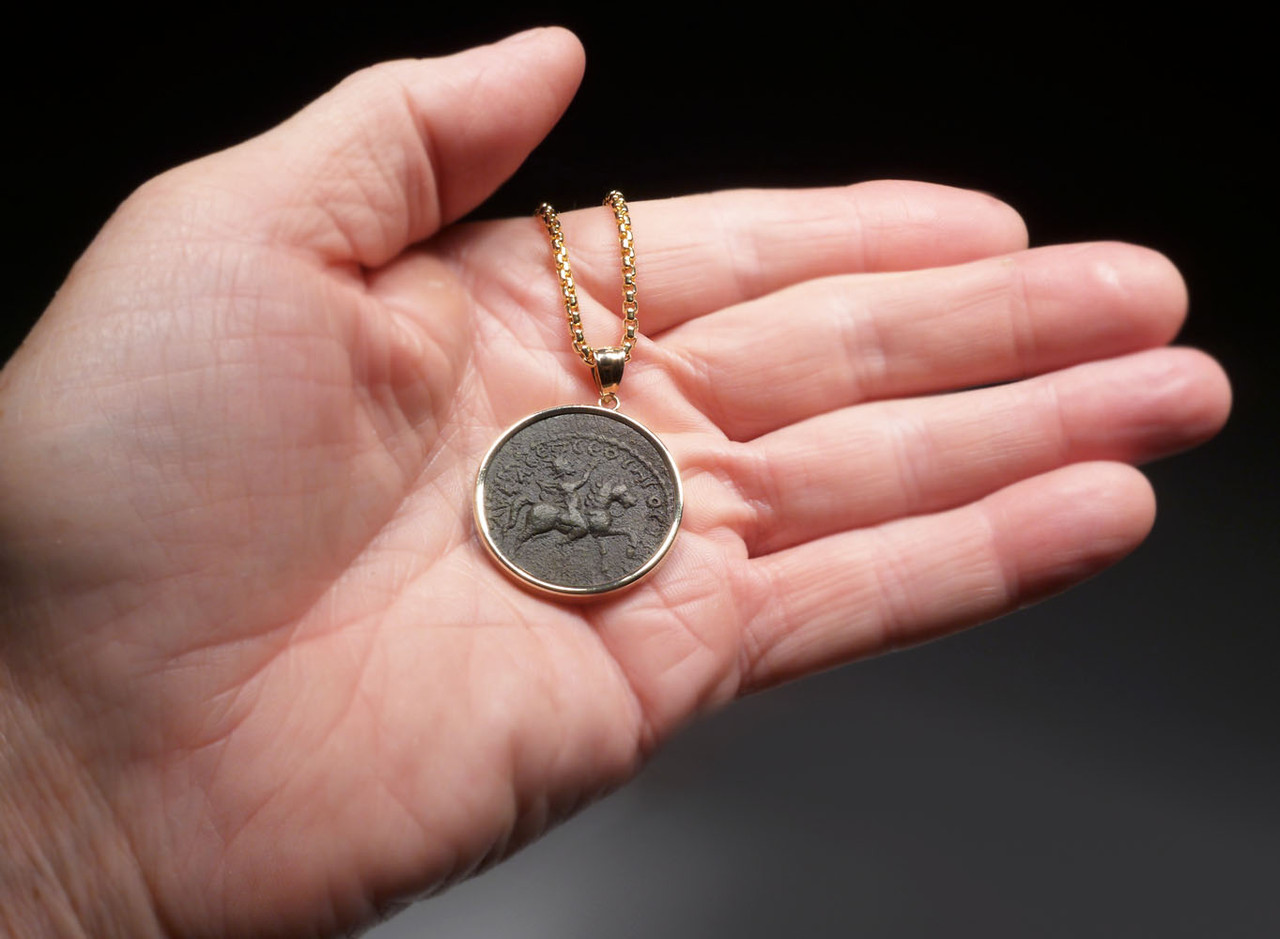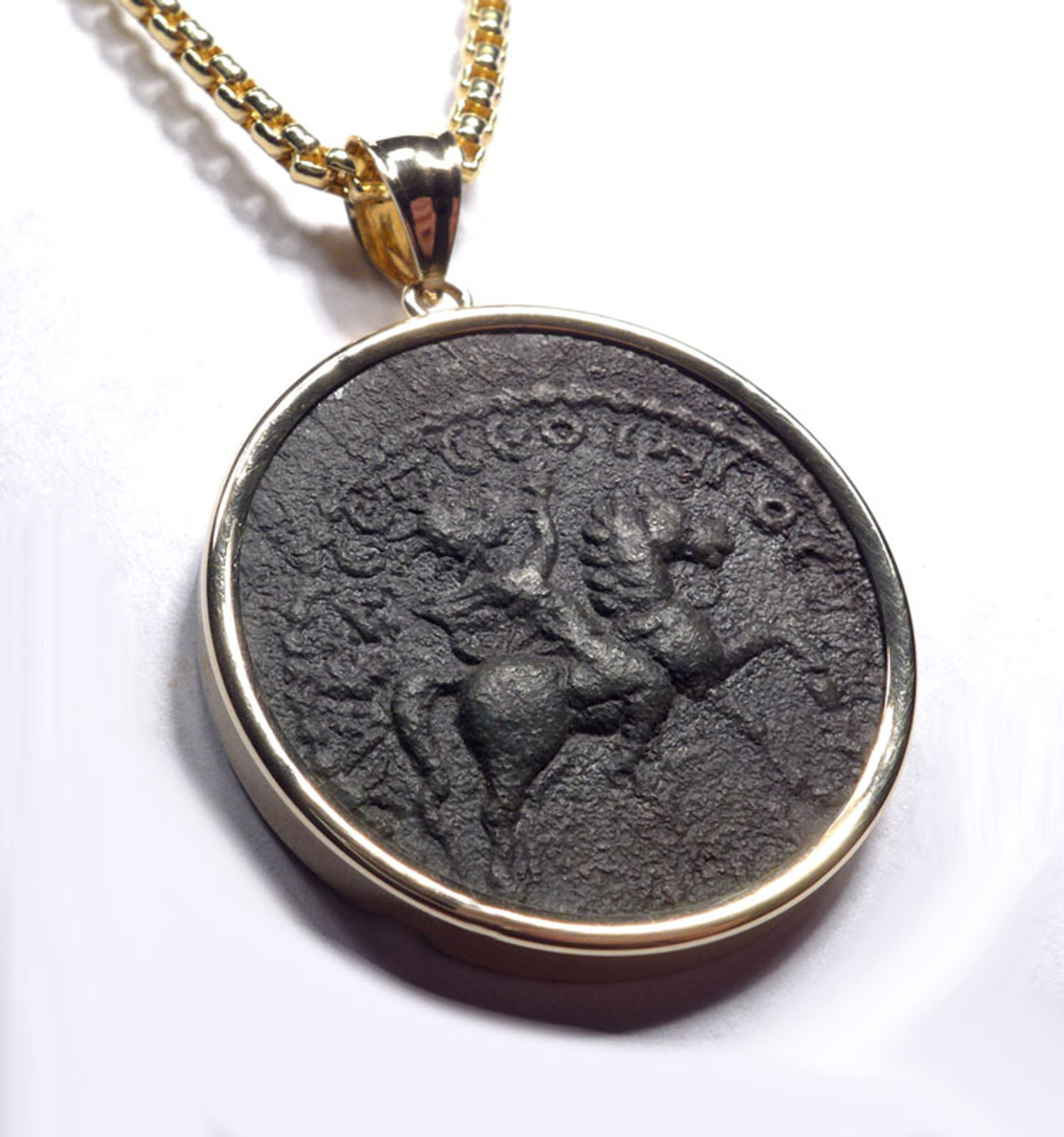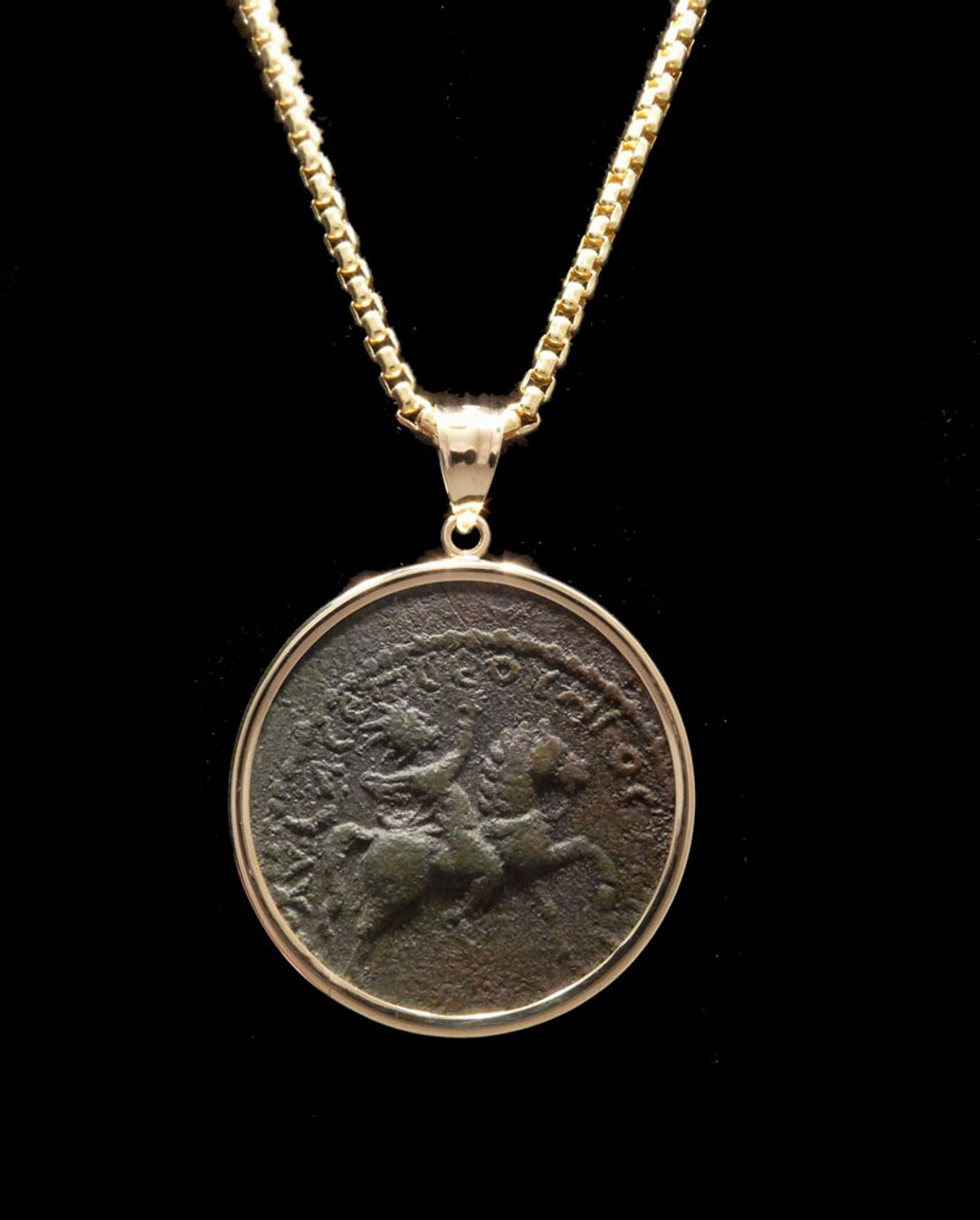Product Description
SEE MORE ANCIENT ROMAN COIN JEWELRY
This extremely rare and large bronze ancient Roman coin features an image on the obverse of emperor Septimius Severus riding a horse with his hand raised and wearing a crown. The coin is rare because the obverse of Roman coins usually depicts a close-up profile portrait of the emperor. It was minted during his reign from 193 to 211 AD. The reverse side shows the ancient Graeco-Egyptian deity Serapis. Serapis was depicted as Greek in appearance but with Egyptian trappings, signified both abundance and resurrection. The coin was minted in the ancient Roman town of Olba, of the ancient Cilicia region, in present-day southern Turkey.
This example shows a VERY high relief strike of the emperor on a prancing horse. There is some roughness to the strike but in person, this coin is far nicer than it appears in the photos. The dark brown chocolate patina makes for a handsome contrast to the warm 14 karat yellow gold high polished pendant setting which could be worn by either a man or woman. This large and impressive piece would be ideal for any fancier of the horse or one who participates in equestrian sports. Free gift box included.
*** Chain necklace shown is NOT included
HISTORY
Lucius Septimius Severus was Roman emperor from 193 to 211. He was born in Leptis Magna (present-day Al-Khums, Libya) in the Roman province of Africa. As a young man he advanced through the customary succession of offices under the reigns of Marcus Aurelius and Commodus. Severus seized power after the death of the emperor Pertinax in 193 during the Year of the Five Emperors. Though his military expenditure was costly to the empire, Severus was a strong and able ruler. The Roman Empire reached its greatest extent under his reign—over 5 million square kilometers.
Serapis, also called Sarapis or Sorapis, is an ancient Graeco-Egyptian deity. The cult of Serapis was promoted during the third century BC on the orders of Greek Pharaoh Ptolemy I Soter of the Ptolemaic Kingdom in Egypt as a means to unify the Greeks and Egyptians in his realm. Serapis was depicted as Greek in appearance but with Egyptian trappings, signified both abundance and resurrection.
 US DOLLAR
US DOLLAR
 EURO
EURO
 AUSTRALIAN DOLLAR
AUSTRALIAN DOLLAR
 CANADIAN DOLLAR
CANADIAN DOLLAR
 POUND STERLING
POUND STERLING










